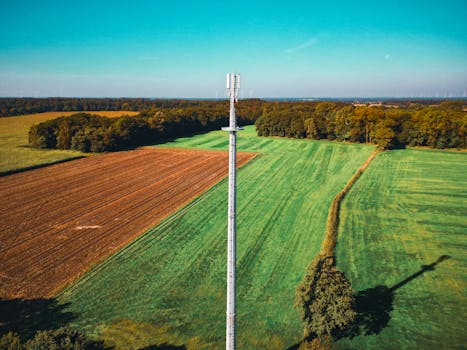
Mapping the Fiber Landscape: Key Players and Projects Across Africa
Mapping the Fiber Landscape: Key Players and Projects Across Africa is crucial for understanding the rapid growth and development of the telecommunications sector in Africa. The focus keyword Mapping the Fiber Landscape is essential for this discussion, as it highlights the importance of fiber optics in connecting the continent. The African fiber landscape is a complex and dynamic ecosystem, with numerous players and projects contributing to its growth and development. In this article, we will delve into the key players and projects that are shaping the African fiber landscape, and explore the opportunities and challenges that lie ahead.
Introduction to the African Fiber Landscape
The African fiber landscape has undergone significant transformation in recent years, driven by the increasing demand for high-speed internet and reliable connectivity. The continent’s fiber network has expanded rapidly, with many countries investing heavily in fiber infrastructure to support economic growth and development. According to a report by the International Telecommunication Union (ITU), the number of fiber-optic subscriptions in Africa increased from 1.4 million in 2010 to over 13 million in 2020, representing a growth rate of over 800%.
One of the key drivers of this growth has been the development of national fiber backbone networks, which have enabled the creation of high-speed connectivity corridors across the continent. For example, the East African Backbone System (EASSy) is a 10,000-kilometer fiber network that connects Kenya, Tanzania, Uganda, and Ethiopia, providing high-speed internet access to millions of people. Similarly, the West African Cable System (WACS) is a 14,000-kilometer fiber network that connects South Africa, Nigeria, and 12 other countries in West Africa, providing a major boost to regional connectivity.
Key Players in the African Fiber Landscape
There are several key players that are shaping the African fiber landscape, including telecommunications operators, internet service providers, and fiber infrastructure providers. Some of the major players include MTN, Vodacom, Orange, and Liquid Telecom, which have invested heavily in fiber infrastructure across the continent. For example, MTN has launched a number of fiber-based services in countries such as South Africa, Nigeria, and Ghana, while Vodacom has rolled out fiber networks in countries such as Tanzania and Kenya.
Internet service providers such as Afrihost and Internet Solutions are also playing a critical role in the African fiber landscape, providing high-speed internet access to homes and businesses across the continent. Additionally, fiber infrastructure providers such as Dark Fibre Africa and FibreCo are building and operating fiber networks on behalf of telecommunications operators and internet service providers.
Challenges and Opportunities in the African Fiber Landscape
Despite the significant progress that has been made in the African fiber landscape, there are still several challenges that need to be addressed. One of the major challenges is the lack of fiber connectivity in rural areas, where many communities remain unconnected to the global digital economy. According to the ITU, over 80% of the African population lives in rural areas, but these areas account for less than 20% of the continent’s fiber connections.
Another challenge is the high cost of fiber deployment, which can make it difficult for telecommunications operators and internet service providers to invest in fiber infrastructure. However, there are also several opportunities in the African fiber landscape, including the growing demand for high-speed internet and the increasing adoption of cloud services. As the African fiber landscape continues to evolve, it is likely that we will see new players and projects emerge, driving growth and innovation in the sector.
Conclusion
In conclusion, the African fiber landscape is a complex and dynamic ecosystem, with numerous players and projects contributing to its growth and development. As the continent continues to invest in fiber infrastructure, we can expect to see significant improvements in connectivity and economic growth. The key players and projects highlighted in this article are just a few examples of the many initiatives that are underway to transform the African fiber landscape.



